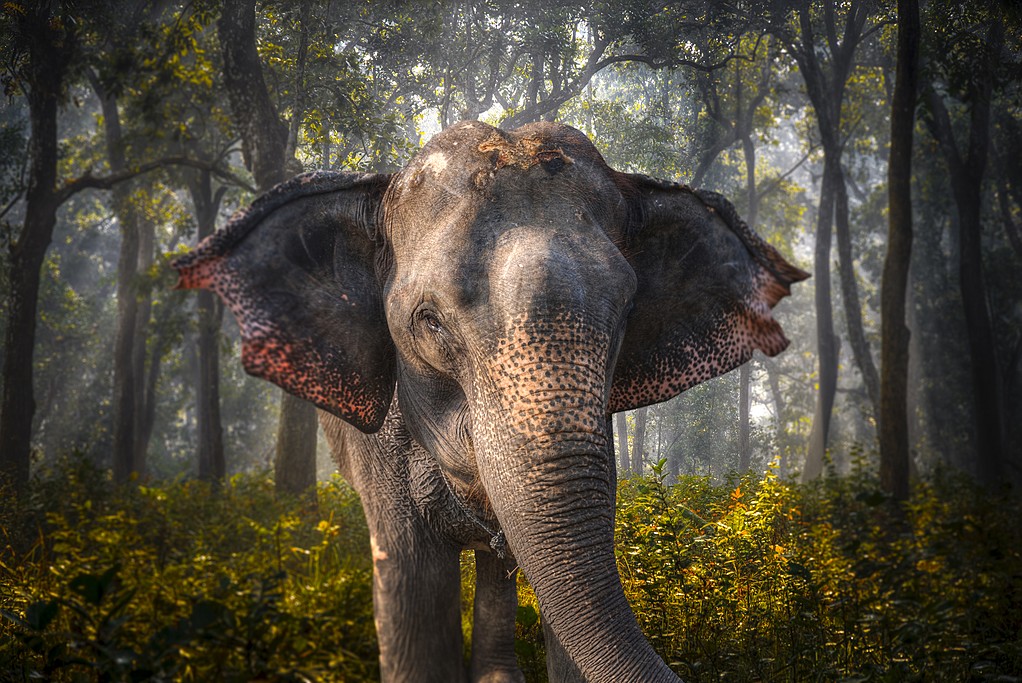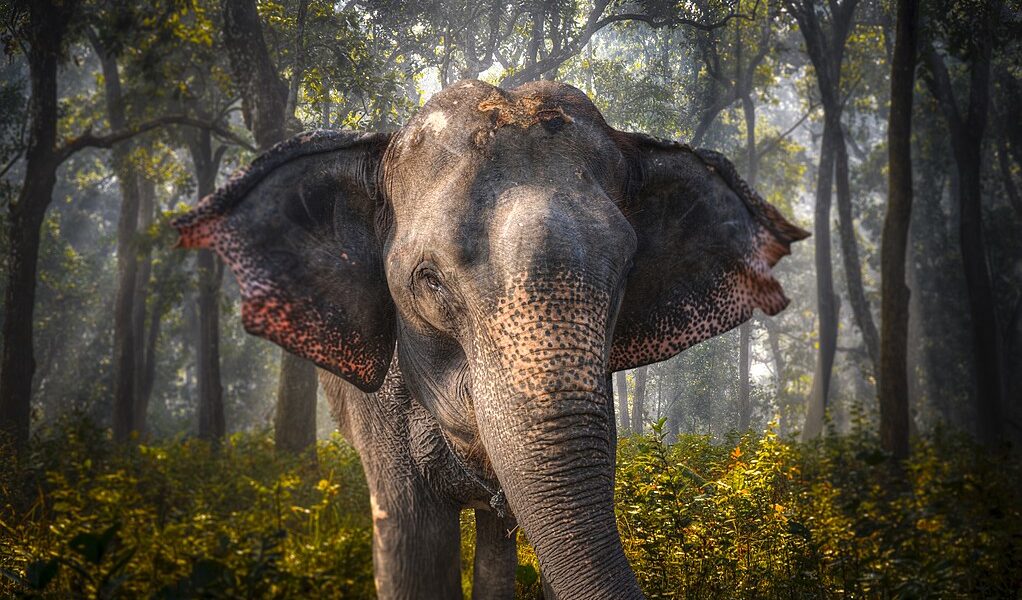
Most travelers to Nepal think of trekking in the Himalaya, but there’s another entirely different landscape to explore in the south of Nepal—Chitwan and Bardia National Parks. Under the forested canopies of these two national parks, you’ll spot rhinos, tigers, elephants, and a variety of birdlife. Here’s a guide for planning trips to these two regions.
## Exploring the Jungles of Nepal: Chitwan and Bardia National Parks – A Detailed Guide
Nepal, a land of towering mountains and vibrant culture, also boasts a remarkable diversity of ecosystems, including lush jungle landscapes teeming with wildlife. Within its borders lie ten national parks, but for travelers specifically seeking an immersive jungle experience and the chance to observe animals in their natural habitat, two stand out as particularly compelling destinations: Chitwan National Park and Bardia National Park. While both offer incredible opportunities for adventure and wildlife encounters, they cater to slightly different travel styles and preferences. Chitwan, with its relative accessibility, draws a larger crowd, while Bardia, more remote and less frequented, provides a truly secluded wilderness experience.
The optimal time to embark on a jungle adventure in either of these parks is during the dry season, specifically from March to April. This period offers several advantages. The reduced rainfall results in thinner jungle foliage, significantly enhancing the visibility of animals. Imagine yourself gliding down a river, the sun warming your face, and suddenly spotting a rhino emerging from the sparse undergrowth for a drink – a sight far more likely during these months. Furthermore, the scarcity of water sources during the dry season concentrates wildlife around the remaining watering holes, making it easier for experienced guides to predict their movements and lead you to prime viewing locations.
The months of October and November also present a favorable window for visiting the jungles of Nepal. Following the intense monsoon season, the landscape transforms into a vibrant tapestry of green. While the denser vegetation can make animal spotting somewhat more challenging, the weather during this period is undeniably pleasant. Picture yourself trekking through the jungle with the sun filtering through the leaves, the air crisp and clean, and the afternoon temperatures hovering comfortably around 70° F. The slightly increased difficulty in spotting animals is offset by the sheer beauty of the rejuvenated landscape and the comfortable climate. To delve deeper into the best times to visit Nepal and plan your trip accordingly, resources are readily available.
## Chitwan National Park: A Legacy of Conservation
Chitwan National Park holds the distinction of being Nepal’s first national park, established in 1973. This landmark conservation effort transformed what was once a vulnerable ecosystem into a protected sanctuary, safeguarding its diverse flora and fauna for generations to come. Located a manageable five-hour drive from Kathmandu, or a quick 25-minute flight, Chitwan encompasses a sprawling 360 square miles of diverse terrain. This includes majestic sal forests, expansive grasslands, and intricate marshlands, all nestled within the subtropical Inner Terai lowlands. The park’s accessibility and diverse landscape make it a popular choice for travelers seeking a convenient and rewarding wildlife experience.
To ensure both your safety and the preservation of the delicate ecosystem, all visits to Chitwan National Park must be conducted in the company of a trained and licensed guide. These knowledgeable experts possess an intimate understanding of the park’s flora, fauna, and animal behavior, enriching your experience and ensuring responsible tourism practices.
The rhythm of life in Chitwan revolves around the natural world, and most safari trips commence in the early morning hours. Animals are most active during this time, taking advantage of the cooler temperatures before the heat of the day sets in. As the sun rises, casting a golden glow over the landscape, you’ll have a variety of options for exploring the park. You could opt for a thrilling safari hike, immersing yourself in the sights and sounds of the jungle on foot. Alternatively, you might choose a serene canoeing expedition, gliding silently along the waterways and observing wildlife from a unique perspective. For those seeking a more comprehensive exploration, a jeep safari provides access to a wider range of habitats within the park.
### The Rich Tapestry of Wildlife in Chitwan National Park
Chitwan National Park boasts a remarkable array of wildlife, offering visitors unparalleled opportunities for observation and appreciation. Perhaps the most iconic resident of Chitwan is the Asian one-horned rhino. Witnessing these magnificent creatures in their natural habitat is a truly special experience, particularly considering their precarious past. Rampant poaching in the early 20th century brought the rhino to the brink of extinction in Nepal’s jungles. However, thanks to dedicated conservation efforts, including the establishment of Chitwan as a rhino sanctuary in 1962, the rhino population has rebounded significantly. Today, over 500 rhinos thrive within the park, a testament to the success of these initiatives.
In addition to rhinos, Chitwan is also home to one of the highest concentrations of Bengal tigers in the world, with an estimated 122 individuals roaming the area. Spotting these elusive predators in the dense jungle can be challenging, particularly with the abundance of water sources available to them. This is where the expertise of a knowledgeable local guide proves invaluable. Their understanding of animal behavior and their familiarity with the terrain can greatly increase your chances of witnessing these magnificent creatures in their natural glory.
Beyond rhinos and tigers, Chitwan teems with other fascinating species. Keep an eye out for Indian bison, playful langur monkeys, and four distinct species of deer. The gharial crocodile, a unique fish-eating reptile, also calls Chitwan home, as do over 150 varieties of butterflies, adding a splash of color to the vibrant landscape. If fortune favors you, you might even catch a glimpse of a leopard, a sloth bear, or a majestic wild elephant. Bird enthusiasts will be delighted by the park’s avian diversity, with over 500 species recorded, including herons, kingfishers, flycatchers, woodpeckers, red jungle fowl, and elegant egrets. For serious birdwatchers, planning a visit during March or December is highly recommended, as these months offer the best opportunities for observing the park’s diverse avian population.
### Gaining Access to Chitwan National Park
Reaching Chitwan National Park is relatively straightforward, with several convenient transportation options available. A road journey from Kathmandu typically takes 5-6 hours, offering scenic views of the Nepalese countryside. Alternatively, you can opt for a quick and convenient 25-minute flight from Kathmandu to Bharatpur Airport, which is located just outside the park. With approximately seven flights departing from Kathmandu daily, this option provides a time-saving alternative for those with limited time.
Chitwan boasts two main entrances: Sauraha, located in the eastern part of the park, and Meghauli Village, situated in the west. Both entrances offer access to diverse landscapes and wildlife viewing opportunities, allowing you to tailor your experience to your specific interests and preferences.
## Bardia National Park: A Sanctuary of Solitude
For those seeking a truly immersive and secluded jungle experience, Bardia National Park presents an enticing alternative. Situated on the border with northern India, in the mid-Far Western Terai region, Bardia offers a sense of remoteness and untouched wilderness that is increasingly rare in today’s world. Unlike the more popular Chitwan, Bardia remains relatively uncommercialized, allowing visitors to feel like they have Nepal’s wilderness all to themselves.
Spanning a vast 373 square miles, Bardia National Park is characterized by dense sal forests and expansive grasslands, bisected by the jade-colored Karnali River. Imagine yourself venturing deep into the heart of this wilderness, spending hours without encountering another soul, enveloped by the sights, sounds, and smells of the untamed jungle.
Bardia’s diverse habitats, ranging from dry upland slopes to pockets of grassy plains, support a remarkable abundance of wildlife. To fully appreciate the park’s offerings, it is recommended to allocate at least three or four days to your visit. As in Chitwan, starting your days early is crucial, as animals are most active during the cooler morning hours.
### Unveiling the Wildlife Treasures of Bardia National Park
Bardia National Park is renowned for its tiger population, offering visitors a heightened chance of encountering these magnificent predators. In 2010, the establishment of Banke National Park on Bardia’s eastern border created the largest tiger conservation area in Asia, further solidifying the region’s importance for tiger preservation. The vegetation in Bardia is generally less dense than in Chitwan, and there are fewer water sources, which can make tigers easier to spot as they venture out in search of prey and water.
In addition to tigers, Bardia is also home to a growing rhino population. These magnificent creatures seem to favor the western side of the park, making it a prime location for rhino sightings. Keep an eye out for other fascinating species, including Asian elephants, spotted deer, hog deer, nilgai antelopes, wild boar, leopards, jackals, and even the elusive freshwater Gangetic dolphins. Bardia also serves as a vital habitat for a variety of endangered birds, including the Bengal florican, sliver-eared mesia, sarus crane, and lesser florican, making it a paradise for birdwatchers.
### Reaching the Remote Realm of Bardia National Park
Accessing Bardia National Park requires a bit more effort than reaching Chitwan, but the reward is a truly unparalleled wilderness experience. From Kathmandu, you can fly to Nepalganj Airport, followed by a three-hour bus ride (or 4×4 ride) to the park. Flights to Nepalganj operate approximately five times daily, and the overland journey from the airport to the park takes about an hour.
The park’s headquarters is located at Thakudwara (also spelled Thakurdwara), which also serves as the primary location for accommodations. A smaller headquarters is situated at the eastern entrance, known as East Chisapani.
In conclusion, both Chitwan National Park and Bardia National Park offer incredible opportunities to experience the magic of Nepal’s jungles and encounter its diverse wildlife. Chitwan, with its accessibility and established infrastructure, is a popular choice for those seeking a convenient and rewarding wildlife experience. Bardia, on the other hand, offers a more remote and secluded wilderness experience, ideal for those seeking solitude and a deeper connection with nature. Ultimately, the best choice depends on your individual travel style, preferences, and priorities.
B-1754

